Chrome on desktop will soon be able to create passkeys in Google Password Manager (GPM) and synchronize them across those platforms in addition to Android.
Published: September 19, 2024
Passkeys are a safer and more user friendly alternative to passwords. They enable users to sign in to apps and websites by unlocking their device screen–with a biometric sensor (such as a fingerprint or facial recognition), PIN, or a pattern. With passkeys, users no longer need to remember and manage passwords. Passkeys are already supported in Chrome across many operating systems.
Chrome users on desktop will soon be able to create passkeys in Google Password Manager (GPM) and synchronize them across those platforms.
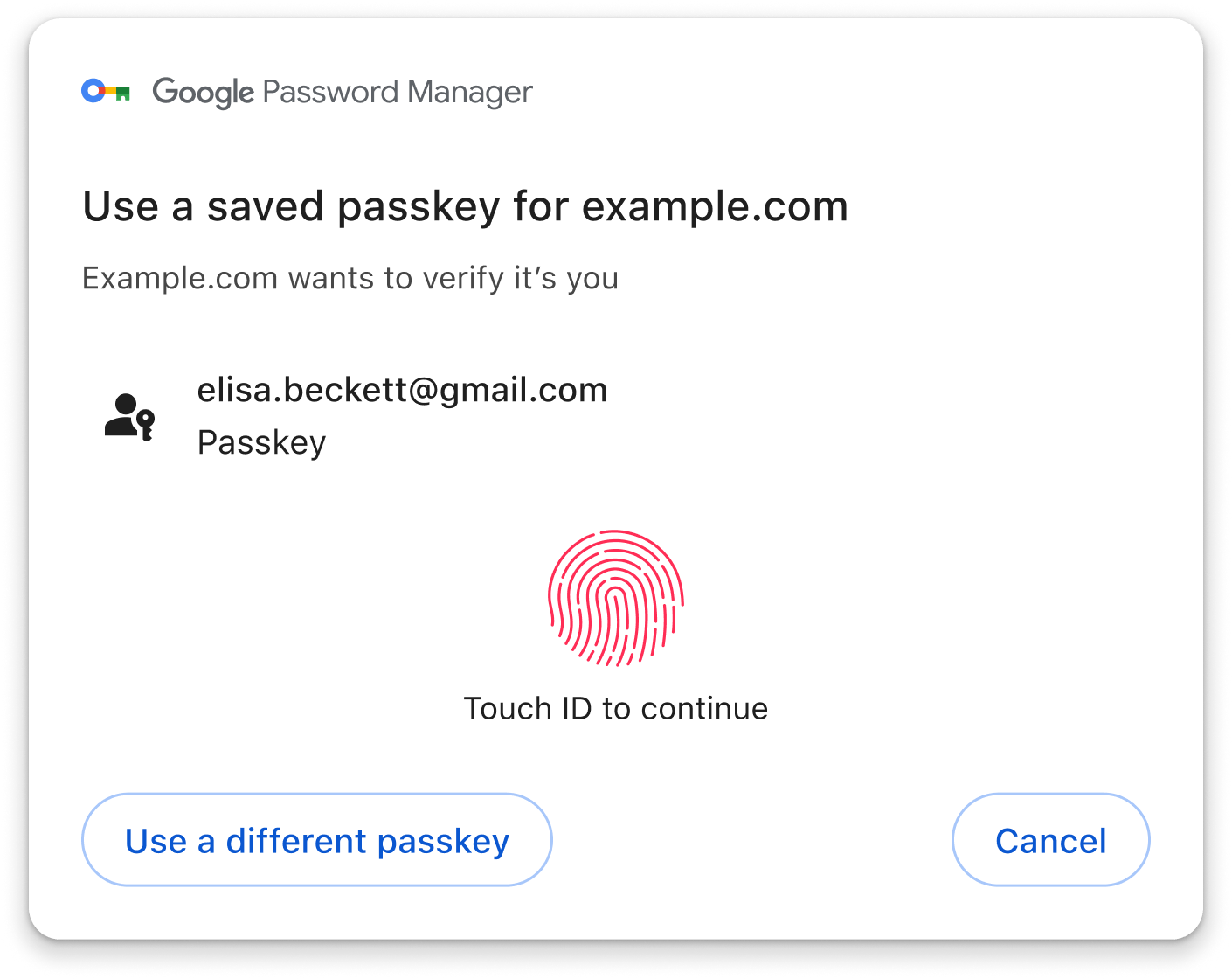
Previously, passkeys created on Chrome on macOS were saved to iCloud Keychain by default, falling back to saving them locally to the Chrome profile. Passkeys saved to iCloud Keychain are synced across Apple devices where the same Apple account is available, but not to Windows or Android. Passkeys created on Chrome on Android were saved to Google Password Manager by default and synced across other Android devices, but not other operating systems. Passkeys created on Chrome on Windows were saved locally to Windows Hello.
| Windows | macOS | iOS/iPadOS | Android | Linux | ChromeOS | |
|---|---|---|---|---|---|---|
| Google Password Manager | - | - | - | ✅ 🔄 | - | - |
| iCloud Keychain | - | ✅ 🔄 | ✅ 🔄 | - | - | - |
| On-device | ✅ | ✅ | - | ✅ | - | - |
This change allows Chrome with a signed in profile on macOS, Windows, Linux or ChromeOS (testing in Beta) to create passkeys, store them in the Google Password Manager and authenticate with them. Chrome with the same profile on those platforms on another device will be able to sync the passkeys and use them for authentication.
| Windows | macOS | iOS/iPadOS | Android | Linux | ChromeOS | |
|---|---|---|---|---|---|---|
| Google Password Manager | ✅ 🔄1 | ✅ 🔄 | 🕔 | ✅ 🔄 | ✅ 🔄 | ✅ 🔄2 |
| iCloud Keychain | - | ✅ 🔄 | ✅ 🔄 | - | - | - |
| On-device | ✅ | ✅ | - | ✅ | - | - |
We are working on enabling Chrome on iOS/iPadOS to create passkeys on Google Password Manager and synchronize as well.
How it works
When a user sets up passkeys in Google Password Manager on Android, they'll automatically be protected by the same method they use to unlock their phone, such as a fingerprint or screen lock. To enable users to access saved passkeys on other devices, we're introducing Google Password Manager PIN. This PIN adds an additional layer of security to ensure their passkeys are end-to-end encrypted and can't be accessed by anyone, not even Google.
When a user starts using passkeys on a new device, they will need to know either their Google Password Manager PIN, or the unlock method used by their Android device, to access the passkeys. This recovery factor will allow the user to securely access and sync the passkeys across computers and Android devices. Once synced, they'll be able to use the passkey to access supported apps and websites.
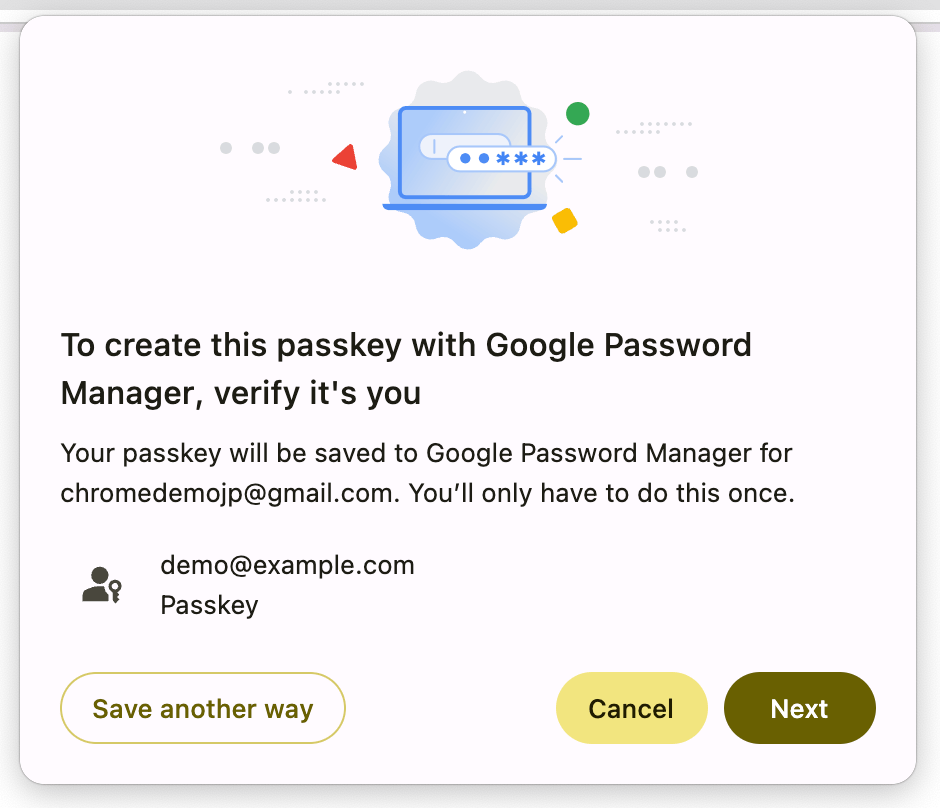
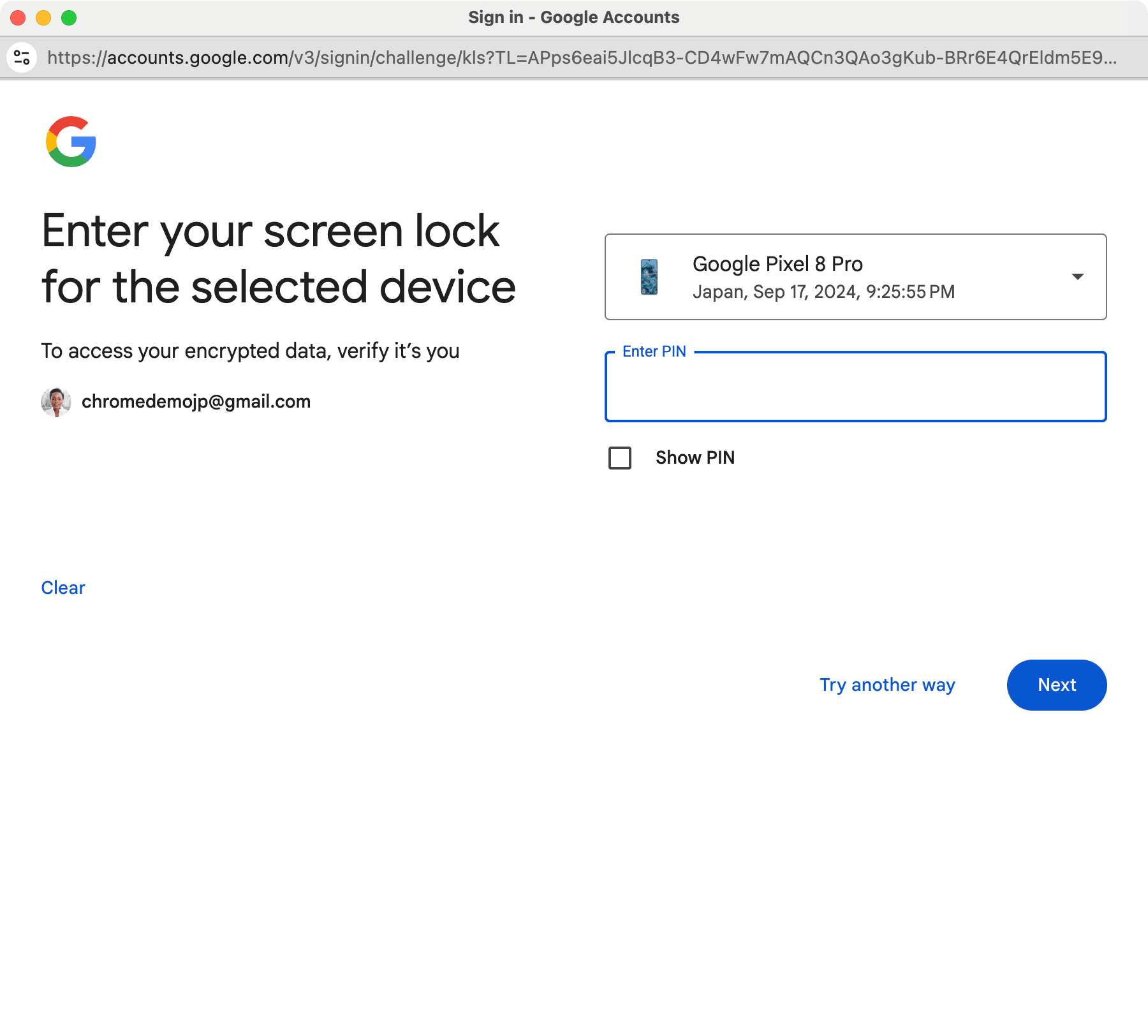
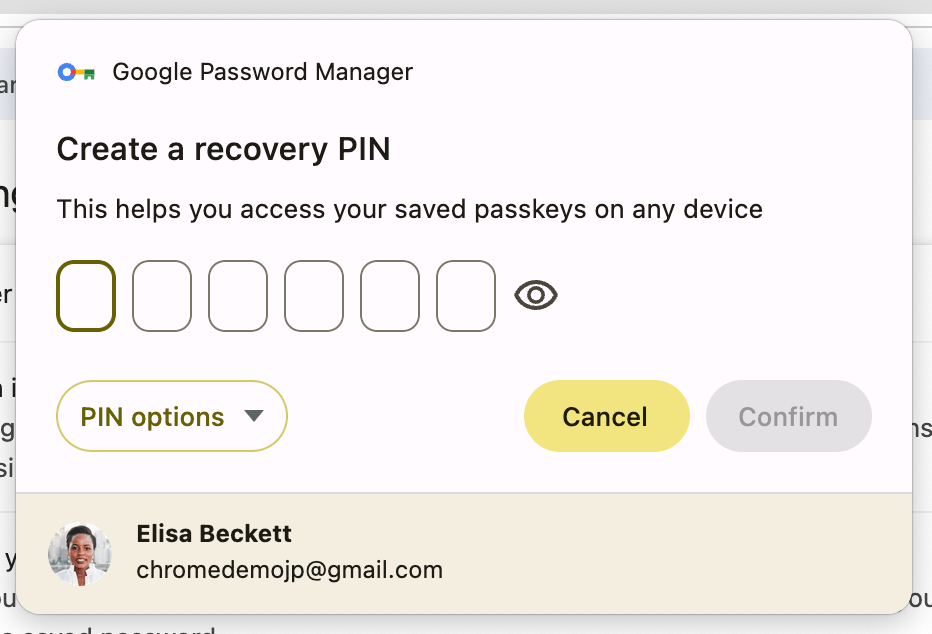
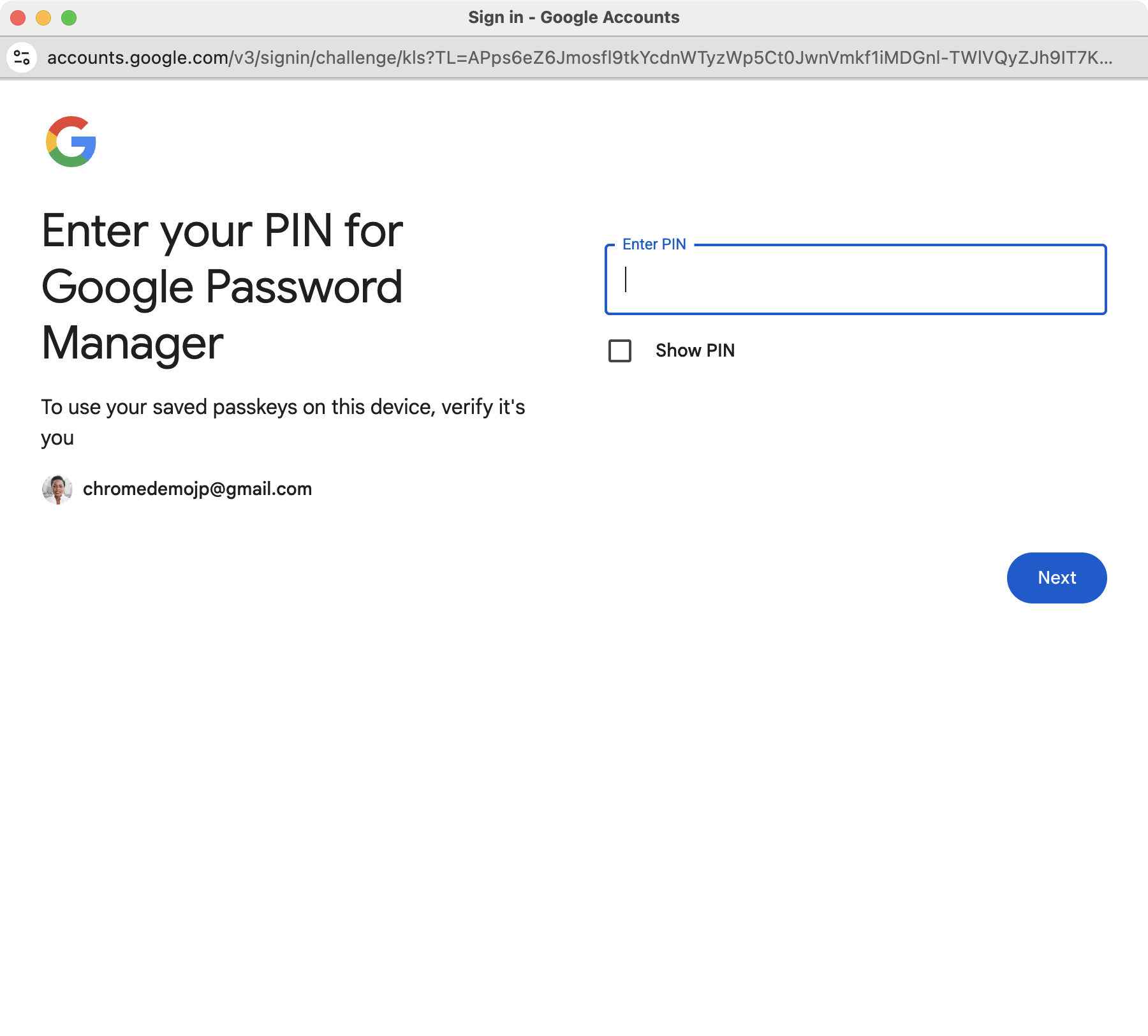
Learn more about passkeys
With this update, passkeys on Google Password Manager are synced across most devices that use Chrome with their Google Account. Now is the time for your website to support passkeys. Learn more about passkeys with these resources:
- Watch a short video to learn passkeys: Understand passkeys in 4 minutes
- Learn passkeys in Google ecosystem: Passwordless login with passkeys
- Learn passkeys on the web: Passkeys | Chrome for Developers

